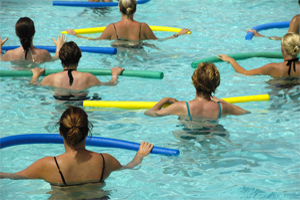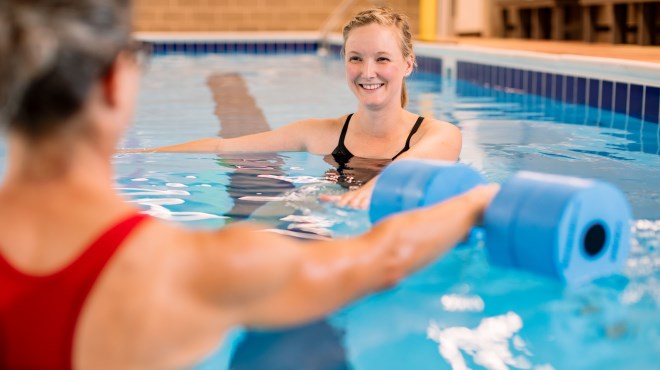Recent Posts
-

-
 Patient StoriesA lifesaver saved: An EMS veteran’s journey from rescue to recoveryNovember 14, 2025
Patient StoriesA lifesaver saved: An EMS veteran’s journey from rescue to recoveryNovember 14, 2025 -

Aquatic exercise: Gentle on your bones, joints, muscles

Done correctly, water workouts can give you gains similar to those on land, including aerobic fitness, muscular strength and endurance, flexibility and better balance.
Healthcare providers recommend aquatic exercise because:
- Water's buoyancy supports your weight. When you're submersed up to your neck, the water cancels out about 90% of your body weight, significantly reducing stress on your weight-bearing joints, bones and muscles. Instead of landing on a hard surface with the impact of your full weight, you land with only 10% of your body weight. This reduces risk of injury.
- When you’re submerged in water, your circulation may increase, improving your cardiovascular health.
- The pressure of the water on your body can reduce swelling if you have painful injuries.
- Water offers resistance, which strengthens your muscles as you push against it.
- Since the effects of gravity diminish in water, you can do stretching exercises that you may not be able to do on land.
You may want to start with water walking. In water that's about waist-high, walk across the pool swinging your arms like you do when walking on land. Avoid walking on your tiptoes, and keep your back straight. Tighten your abdominal muscles to avoid leaning too far forward or to the side.
To increase resistance as your hands and arms move through the water, wear hand webs or other resistance devices. Water shoes can help you maintain traction on the bottom of the pool.
Once you're comfortable walking in waist-high water, try walking in deeper water. As you walk, swing your arms. For a more intense workout, consider jogging in deep water.
Water workouts can help you reach your fitness goals without pain or injury. They can add cross-training variety to your existing exercise routine or offer a safe and fun way to start an exercise program. So, jump on in — the water’s fine.
If you live with a chronic health condition such as asthma, diabetes or heart disease, talk to your healthcare provider about aquatic exercise.
By Mayo Clinic Health System staff


